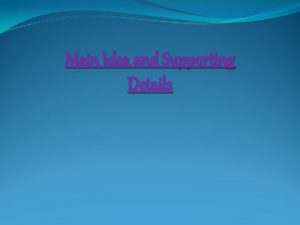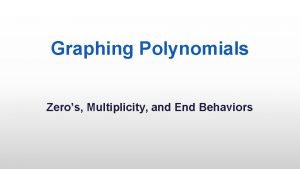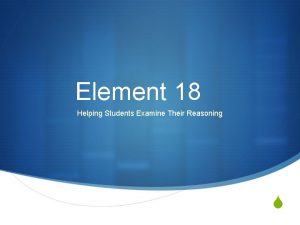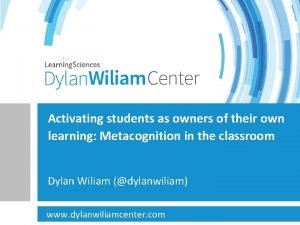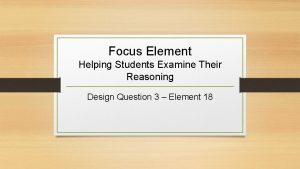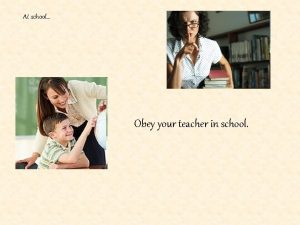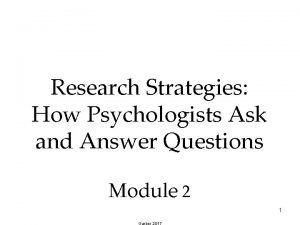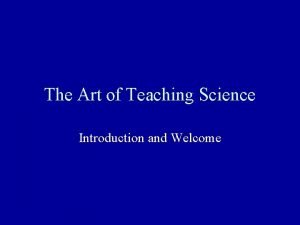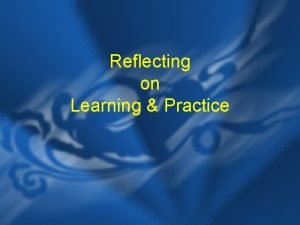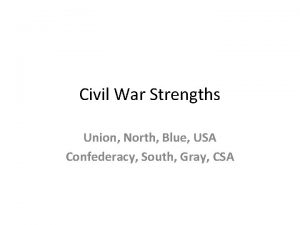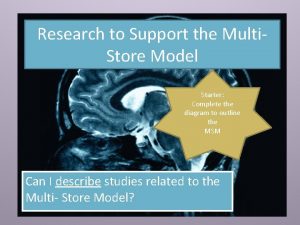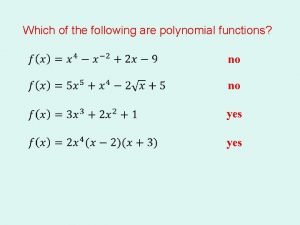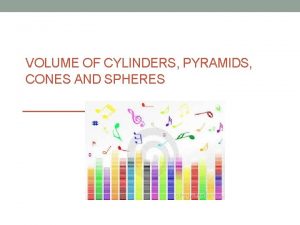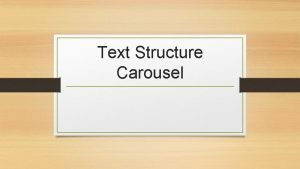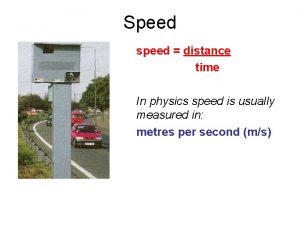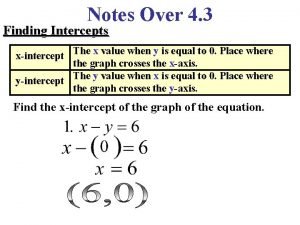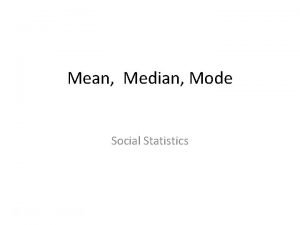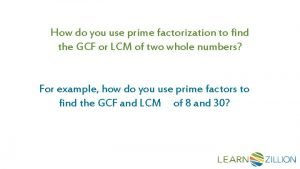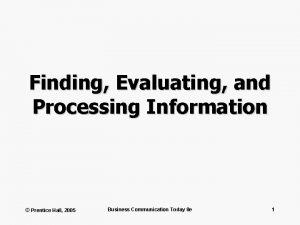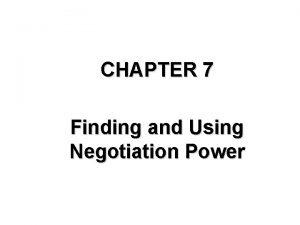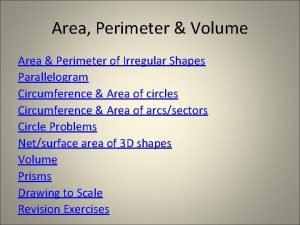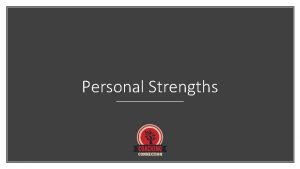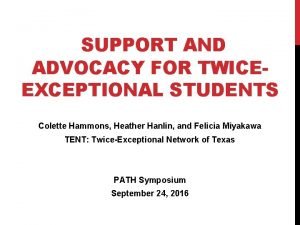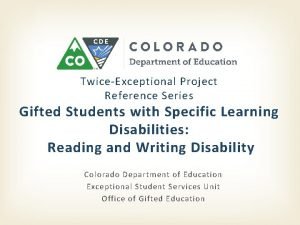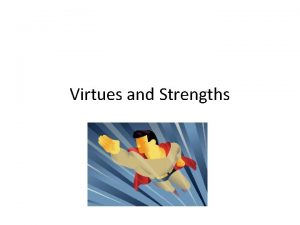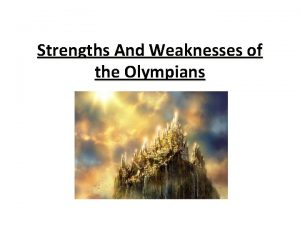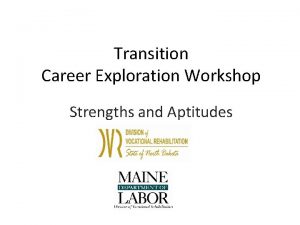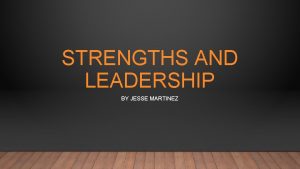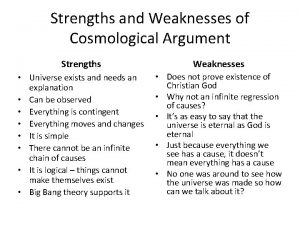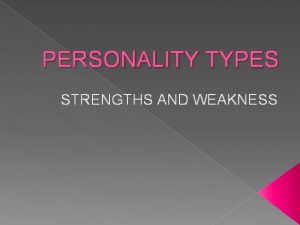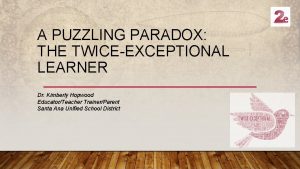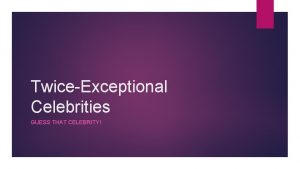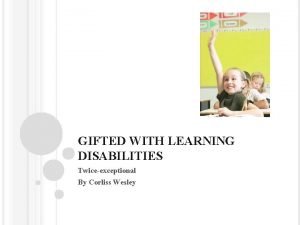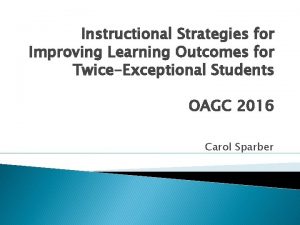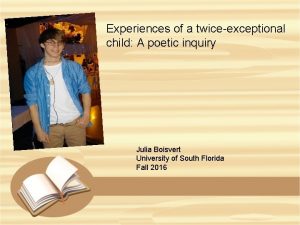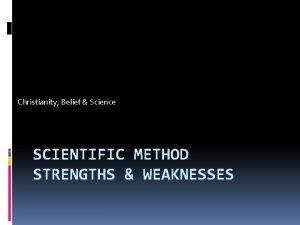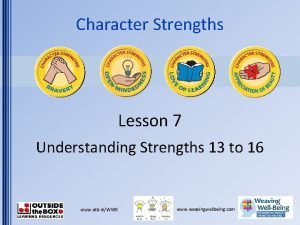TwiceExceptional Students Finding their strengths and supporting their































- Slides: 31

Twice-Exceptional Students: Finding their strengths and supporting their learning Christine J. Briggs, Ph. D. University of Louisiana at Lafayette

STephanie

Categories of 2 E • Formally identified as gifted but not having an identified disability • Formally identified as having a disability but not gifted ID • Not formally identified as gifted or disabled – components mask on another – giftedness and the disability not readily apparent

Types of Twice. Exceptionality • Gifted student with physical disabilities • Gifted students with sensory disabilities • GT and Asperger Syndrome • GT with Emotional or behavioral disorders • GT with ADHD • GT and Learning Disabilities

Characteristics 2 E with Learning Disabilities • • Struggle with basic skills – cognitive processing difficulties High Verbal ability with difficulty with written language • Unwilling to take academic risks • Uses humor to divert attention from school failure • Needs scaffolding in deficit areas but highly independent in other areas = can appear stubborn and inflexible • Strong observational skills difficulty with memory skills • Attention deficit problems but not in areas of interest • Sensitive regarding disability areas, highly critical of self and others • Strong questioning but can be disrespectful when teacher answers the question • May be perceived as a loner – doesn’t fit either GT or LD student difficulty finding peers • Displays unusual imagination, generating ideas – sometimes “bizarre” ideas, divergent in thought • Very focused interests - passion about certain topics to the exclusion of others

2 E Video Part 1 • While viewing the first portion of the 2 E video, consider the following: • Who are 2 E? What are the traits, characteristics and behaviors associated with 2 E? • Misunderstood behaviors such as dualities, asynchrony – Out of ”sync” with contradictory behaviors • Environmental Supports

Post Viewing Part 1 • Remediating Weaknesses • Building on Strengths

BREAK

Viewing 2 E Video Part II

DEbriefing • How feasible do you think the Bridges Model (enrichment and developing of talents) is for schools today? • What can you do within your work setting to support 2 E students? • Why don’t schools pay as much attention to students’ strengths as they do their weaknesses? • What might you do/have done as result of watching the film? How might you talk to parents regarding strengths and challenges for their student? • How can you serve as an advocate for 2 E students?

Who are 2 E? Qualities of one who is 2 E • Gifted students with coexisting disabilities = Twice-exceptional or 2 E • Confusing to parents, teachers, and other support professionals • Asynchrony – uneven development Examples of successful individuals who are 2 E • Jack Horner – world renowned paleontologist (consultant for Jurassic Park) – difficulty reading and writing = dyslexia • Jim Carey – Actor and comedian (ADHD and depression since childhood) • Picasso – could not read or write and refused to do anything but print • Dr. Temple Grandin – Engineer who designed cattle yards – autistic

Famous 2 E People #1 • At the age of 12 was still unable to read • Remained deficient in reading all of his life • Could memorize entire lectures which was how he got through school • Diagnosed with ADD • Was a US Army officer best know for his leadership in WWII

George Patton

Famous 2 E People #2 • Was labeled as ‘slow” as a child • Was fired from the Kansas City Newspaper for not being creative • An American film producer, director, screen writer, voice actor, animator, entrepreneur, entertainer, international icon, and philanthropist

Walt Disney

Famous 2 E People #3 • A famous dyslexic female entertainer • Had a math learning disability • She has a challenge with remembering numbers and balancing a checkbook • Referred to as “The Goddess of Pop” • Has won an Academy Award, a Grammy Award, an Emmy Award, three Golden Globes and a Cannes Film Festival Award

Cher

Famous 2 E People #4 • Taught herself to read at the age of 4 • Received no formal schooling but had tutors and learned mathematics from her father • Had a diagnosed learning disability called dysgraphia • Was unable to write legible work • A British crime writer of novels, short stories and plays

Agatha Christie

Famous 2 E people #5 • Was academically disadvantages as a child • Failed the 8 th grade • Did terrible in math and generally hated school • A British Conservative politician and statesman known for his leadership of the UK during WWII • He is the only British Prime Minister to have received a Nobel Prize for Literature

Winston CHurchill

Why they are overlooked • Focus on what they cannot do Vs. What they can do • Reframing to Positive Thinking • Fixed Mindset Vs. Growth Mindset

Positive thinking • FAIL • END • NO

Growth Vs. Fixed

10 Growth Mindset Statements Instead of: Try thinking: • I’m not good at this • What am I missing? • I’m awesome at this • I’m on the right track • I give up • I’ll use some of the strategies we’ve learned • This is too hard • I can’t make this any better • I just can’t do math • I made a mistake • It’s good enough • Plan “A” didn’t work • This may take some time/effort • I can always improve so I’ll keep trying • I’m going to train my brain in math • Mistakes help be to learn better • Is it really my best work? • Good thing the alphabet has 25 more letters.

Responsibilities of the Classroom Teacher • Gather information to identify student needs and strengths. • To fully understand student needs, it is important to use both formal and informal assessments • ERNEST STORY • Develop and implement Individualized Education Programs (IEPs) that include gifted and talented instruction. • As appropriate for the individual student, an IEP can include provisions for advanced learner needs (such as enrichment) and/or additional professional development for the classroom teach • Collaborate with other professionals in the district to better serve twiceexceptional students in the classroom • • Explore avenues to meet individual student needs. • Not all student needs are met in the general education classroom. Educators should consider referral formal services, including special education and gifted and talented education programming, as well as access to other opportunities such as afterschool activities, clubs, independent study, and related arts programs.

Key Issues to consider in Serving 2 E Students • Accommodating Academic Strengths/Gifts • Accommodating Academic Weaknesses/Disabilities • Providing Direct Instruction to Support Classroom Success • Addressing Social/Emotional Issues • Addressing Behavioral Issues

Other resources • The 2 E newsletter http: //www. 2 e. Newsletter. com • The twice exceptional dilemma – Handbook published by National Education Association http: //www. nea. org/assets/docs/twiceexceptional. pdf • Supporting the Emotional Needs of the Gifted (SENG) http: //sengifted. org/

Questions/Concerns

Exit Slip

What they can do
 Whats a supporting idea
Whats a supporting idea Emd behavior
Emd behavior Jose rizal first favorite novel
Jose rizal first favorite novel Helping students examine their reasoning
Helping students examine their reasoning Activating students as owners of their own learning
Activating students as owners of their own learning Helping students examine their reasoning
Helping students examine their reasoning We……….obey our teachers.
We……….obey our teachers. Neither of my two suitcases is adequate for this trip
Neither of my two suitcases is adequate for this trip A person displays a set of rare behaviors
A person displays a set of rare behaviors Students reflection on their learning sample
Students reflection on their learning sample Students reflection on their learning sample
Students reflection on their learning sample Johnson and johnson background
Johnson and johnson background Marks and spencer strengths and weaknesses
Marks and spencer strengths and weaknesses What were the british strengths and weaknesses
What were the british strengths and weaknesses Strengths of the confederacy
Strengths of the confederacy North and south strengths and weaknesses chart
North and south strengths and weaknesses chart Glanzer and cunitz strengths and weaknesses
Glanzer and cunitz strengths and weaknesses Sign of the functions leading coefficient
Sign of the functions leading coefficient Finding the volume of cylinders pyramids cones and spheres
Finding the volume of cylinders pyramids cones and spheres Speed distance time formula
Speed distance time formula You may think it's bad to forget your homework
You may think it's bad to forget your homework What is fact analysis
What is fact analysis Distance speed x time
Distance speed x time How to find the area and perimeter of a composite figure
How to find the area and perimeter of a composite figure Finding x and y intercepts of a function
Finding x and y intercepts of a function Median
Median Inverse trig ratios and finding missing angles
Inverse trig ratios and finding missing angles Lcm of 27 and 18
Lcm of 27 and 18 Calculate mode for grouped data
Calculate mode for grouped data Finding evaluating and processing information
Finding evaluating and processing information Finding and using negotiation power
Finding and using negotiation power Area and perimeter of irregular shapes
Area and perimeter of irregular shapes
